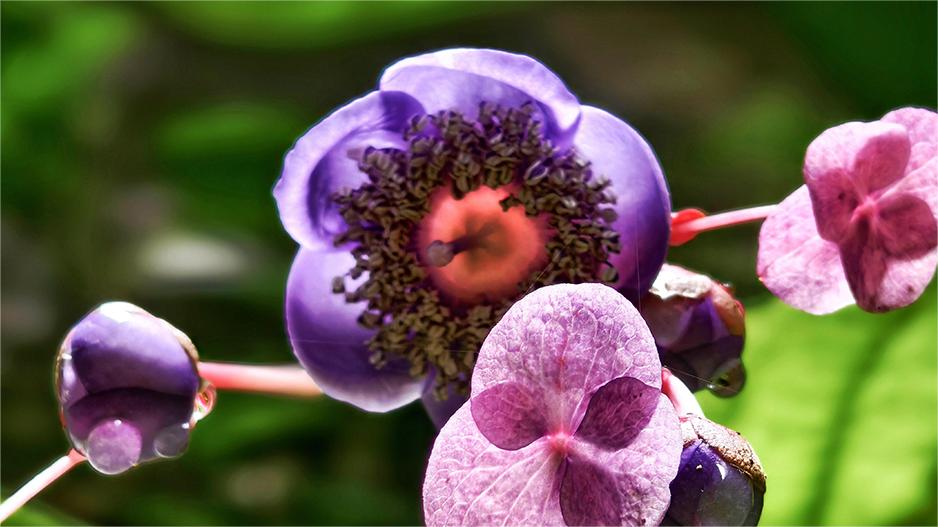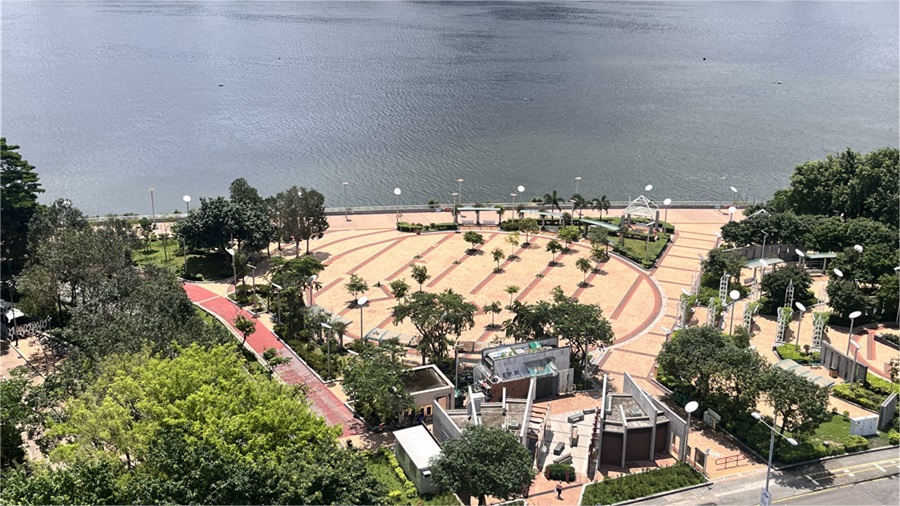To carry on the spirit of Flying Tigers
Editor's Note
February 27, 2024, marked the beginning of our "Me and China" writing campaign, a joint effort by People's Daily and the Chinese People's Association for Friendship with Foreign Countries. Following that, we have received multiple submissions from people around the world, in which they recount their experiences in China or interactions with their Chinese friends.
Today, we are excited to launch the "Me and China" column on People's Daily to publish the most inspiring stories of our foreign friends. Let's come together to rejoice in their warm interactions, exchanges, and friendship with Chinese people.
My bond with the Flying Tigers dates back to the 1980s, a time when China just started its reform and opening-up process, leading to a surge in foreign visitors and a growing need for interpreters. Leveraging my Chinese language proficiency, I started working as an accompanying interpreter for American tourists in China.
In the following years, I had the privilege of accompanying many veterans of Flying Tigers on their return visits to China, retracing the places where they had fought and lived.
Walking alongside these veterans and immersing myself in their daily lives, I came to understand their courageous acts and heard the stories of their wartime experiences. I was deeply moved by their stories and began to gather historical documents for research. I hope that the spirit of Flying Tigers will be carried on from generation to generation among Chinese and American peoples to reinforce the historical underpinning of people-to-people exchanges between our two countries.
To better facilitate the research, working together with my colleague, we started preparing for the establishment of the Flying Tiger Historical Organization in 2002, which was officially launched in 2007, primarily composed of Flying Tigers veterans, their families, and sponsors.
Throughout the years, we have been involved in building the Flying Tiger Heritage Park in Guilin, south China's Guangxi Zhuang autonomous region, and donated nearly 3,000 historical artifacts to the park, including a C-47 aircraft. During World War II, the Flying Tigers created "The Hump" airlift to transport much-needed supplies to China. More than 1,000 Chinese and American airmen lost their lives on this air route, with C-47 being their primary aircraft.
In 2015, we discovered this still operational C-47 aircraft in Australia and refurbished it for the purpose of recreating the historic "The Hump" airlift. We invited five pilots with exceptional C-47 experienced veterans from the United States (US) and Australia, with an average age of 71.8, to pilot this 72-year-old "vintage aircraft."
In August 2016, the veterans started their journey from Australia. Over the course of 90 days, they flew across six countries, encountered two engine replacements, and made an emergency landing. Without navigation equipment, they relied entirely on manual piloting to navigate through the Himalayas. Finally, they arrived in Guilin. As they stepped out of the plane onto the Chinese ground, the airport erupted in applause. Everyone present was filled with excitement and admiration!
Since 2003, I have organized over 20 trips to China for Flying Tigers veterans and their families and friends, as well as enthusiasts of Flying Tigers history. Through these visits, I have experienced numerous emotions and witnessed the profound friendship between the Flying Tigers veterans and the Chinese people, a friendship that had withstood the test of blood and fire. These experiences have deeply engraved in my heart, reinforcing my commitment to carrying on the spirit of the Flying Tigers.
Over the years, there is one visit to China that has remained vivid in my memory. It was in March 2004 when I accompanied a group of 32 Flying Tigers veterans and their friends and families to China. Despite a long flight of over 10 hours, these elderly veterans showed no signs of fatigue. Their eyes were filled with excitement and determination as they set foot on Chinese soil, from which they had been separated for over 60 years.
We visited multiple places during the trip. In Shijiazhuang, capital of north China's Hebei province, the veterans reunited with the Chinese guerrilla fighters who had previously saved them. They slowly made their way towards each other. Though only a few steps apart, for them it was a distance spanning decades. They embraced each other tightly, shaking hands with all their strength, and a flood of excited words burst forth, expressing the deep friendship forged in the fires of war.
During a subsequent gathering, a Chinese guerrilla veteran, dressed in a Zhongshan suit, showed us a photo he had cherished for many years - a group picture with Flying Tigers members. Following that, he began to recount a true story.
On a late autumn day in 1943, a plane flown by a pilot of the Flying Tigers was hit by the Japanese army, which forced him to parachute and land near the outskirts of Shijiazhuang.
The Japanese soldiers launched an extensive search for him. Promptly detecting the situation, nearby Chinese guerrilla fighters immediately initiated an emergency rescue mission. Due to the lack of natural hiding spots in the Haihe Plain where Shijiazhuang is located, the guerrilla fighters led him to a hidden underground tunnel.
Even in the tunnel, the searching sounds of Japanese troops could be heard from time to time. Hiding with them was a young woman with an infant. Due to the thin air, the baby cried incessantly, struggling to breathe. To prevent the Japanese soldiers from hearing any sound, the young woman tightly covered the baby's mouth with her own hands until the soldiers left.
Eventually, the Flying Tigers member was successfully rescued, but the adorable baby lost its life due to suffocation, forever leaving its mother's loving embrace. Later, the guerrilla fighters escorted the pilot through various challenges and safely brought him back to the main base camp.
As the story was told, all Flying Tigers veterans stood up to pay their respect with a moment of silence and a military salute, while the Chinese guerrilla veterans rose in response and returned the salute. They then held each other close in a tight embrace.
As the gathering came to close, the guerrilla veteran solemnly entrusted us with the important task of finding this pilot, an honorable mission we were proud to undertake. In our extensive search over the years, we have reviewed a large number of historical documents, hosted gatherings and birthday celebrations for Flying Tigers members and their families, and visited Flying Tigers veterans who are of similar age to the pilot, all in an effort to trace his whereabouts. Regrettably, we have not been able to fulfill this wish yet.
Even after two decades, the story I heard in Shijiazhuang still resurfaces frequently in my mind. I am determined to keep looking for this pilot, hoping that the old comrades have another chance to reunite.
For me, carrying on the invaluable legacy of Flying Tigers has become a mission I will pursue throughout my life. I will continue to tell the story of Flying Tigers, promoting people-to-people exchanges and mutual understanding between the US and China and deepening the friendship among Chinese and American peoples from generation to generation.
(K.C. Ma is the vice president of the Flying Tiger Historical Organization.)
Photos
Related Stories
- Deep bonds in history remembered
- Flying Tigers spirit promotes China-U.S. friendship
- Flying Tigers veterans relive friendship between Chinese and American people during China tour
- To pass down friendship between American, Chinese people from generation to generation
- Flying Tigers veterans visit Chinese cities, anticipating everlasting China-U.S. friendship
Copyright © 2024 People's Daily Online. All Rights Reserved.









